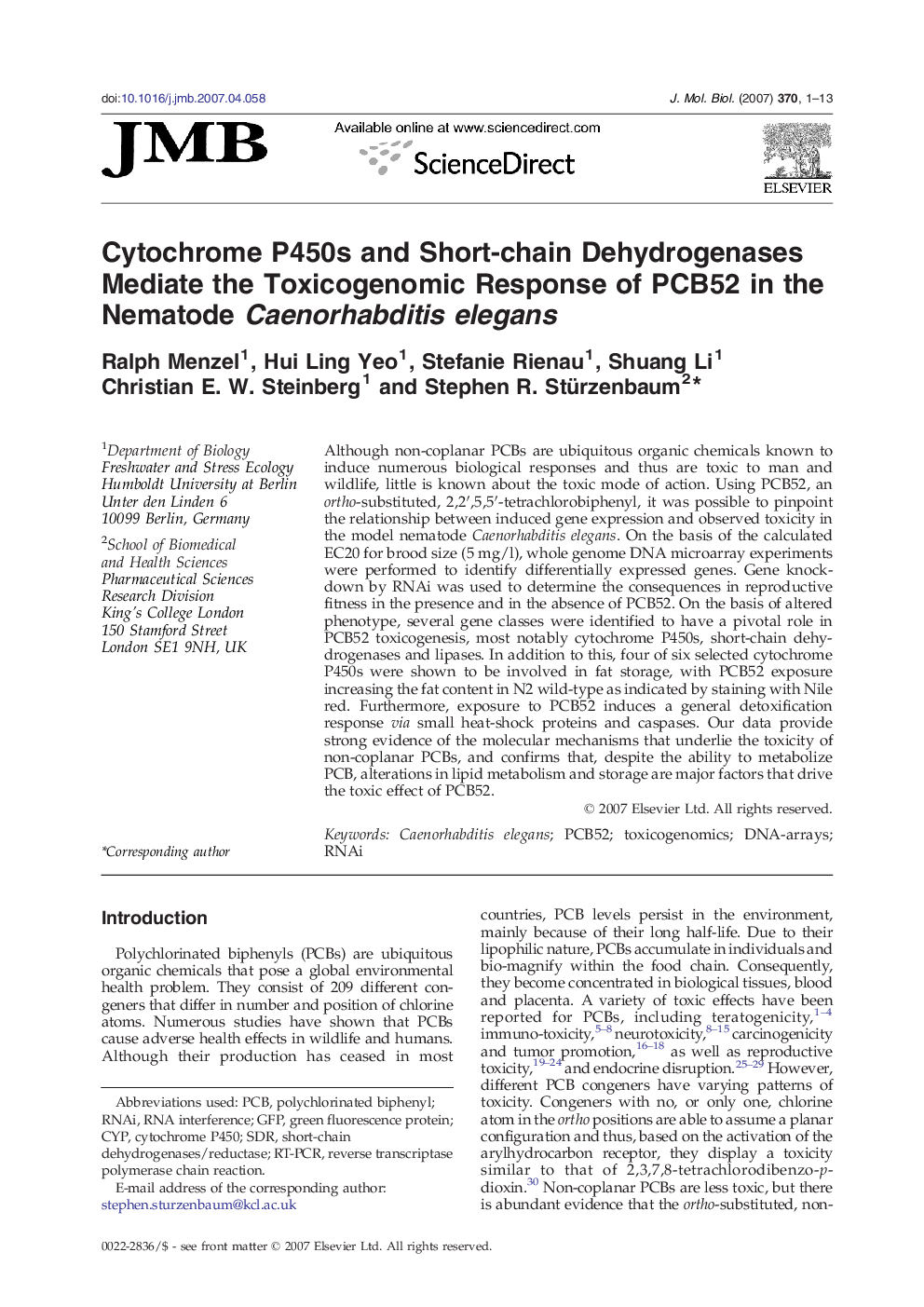| Article ID | Journal | Published Year | Pages | File Type |
|---|---|---|---|---|
| 2188414 | Journal of Molecular Biology | 2007 | 13 Pages |
Although non-coplanar PCBs are ubiquitous organic chemicals known to induce numerous biological responses and thus are toxic to man and wildlife, little is known about the toxic mode of action. Using PCB52, an ortho-substituted, 2,2′,5,5′-tetrachlorobiphenyl, it was possible to pinpoint the relationship between induced gene expression and observed toxicity in the model nematode Caenorhabditis elegans. On the basis of the calculated EC20 for brood size (5 mg/l), whole genome DNA microarray experiments were performed to identify differentially expressed genes. Gene knockdown by RNAi was used to determine the consequences in reproductive fitness in the presence and in the absence of PCB52. On the basis of altered phenotype, several gene classes were identified to have a pivotal role in PCB52 toxicogenesis, most notably cytochrome P450s, short-chain dehydrogenases and lipases. In addition to this, four of six selected cytochrome P450s were shown to be involved in fat storage, with PCB52 exposure increasing the fat content in N2 wild-type as indicated by staining with Nile red. Furthermore, exposure to PCB52 induces a general detoxification response via small heat-shock proteins and caspases. Our data provide strong evidence of the molecular mechanisms that underlie the toxicity of non-coplanar PCBs, and confirms that, despite the ability to metabolize PCB, alterations in lipid metabolism and storage are major factors that drive the toxic effect of PCB52.
